
Choline might not be as well-known as vitamin B12, magnesium, calcium, or vitamin C, but this doesn’t make choline rich foods any less important. The nutrient itself plays many essential roles in our body, such as promoting metabolism, cellular growth, and DNA synthesis.
While our bodies can make some of the choline that we need, much more comes from our diet instead. To stay healthy, we all need to be eating some choline foods every day.
The required levels of choline vary depending on your age and gender. From adolescents onwards, males tend to need around 550 mg of the nutrient each day, while females need between 400 and 425 mg per day. The amounts for women are notably higher if they are pregnant or lactating.
Details about choline deficiency vary, but some estimates from the USDA suggest that men and women often don’t get enough choline each day. Some diets or food preferences could increase the risk of choline deficiency. For example, choline is most prevalent in meat, fish, and dairy, so vegans need to work much harder to get the choline that they need.
Thankfully, choline isn’t a different nutrient to find. The foods in this list will help you to easily hit your choline targets every day.
Choline Rich Foods
- Beef Liver
- Eggs
- Beef
- Chicken
- Other Types of Meat and Poultry
- Milk
- Dairy Foods
- Beans
- Edamame
- Soy Products
- Other Legumes
- Mushrooms
- Salmon
- Cod
- Other Types of Fish
- Shellfish
- Cauliflower
- Brussels Sprouts
- Broccoli
- Swiss Chard
- Artichokes
- Asparagus
- Quinoa
- Avocados
Beef Liver

Whether you like the idea or not, organ meats are a powerful ingredient. They tend to be concentrated sources of key nutrients. This is especially true for beef liver and choline.
When pan fried, a 3-ounce serving of beef liver provides more than 350 mg of choline. That’s more than 60% of the choline that a male needs in a single day.
Plus, a 3-ounce serving of beef liver isn’t all that much. You’re looking at a piece the size of a deck of playing cards.
It’s easy enough to cut the liver up and include it with other meats. Try using it as part of a stew or in meatloaf. You might not be able to taste the liver at all.
Eggs

Eggs mightn’t be as powerful as beef liver for choline, but it’s much easier to fit eggs into your diet. You’re still getting a decent amount of choline too – as a single large egg provides a little over 25% of your daily choline intake (we’re basing the percentages off a male’s needs).
The amount of choline remains similar regardless of how you cook the eggs. So, you could have fried eggs, scrambled eggs, poached eggs, or include the eggs with other ingredients, like in an omelet or a quiche.
Just make sure that you’re eating the yolk of the egg, not just the whites. Most of the choline is found in the egg yolk. You won’t get much from the egg whites at all.
Beef
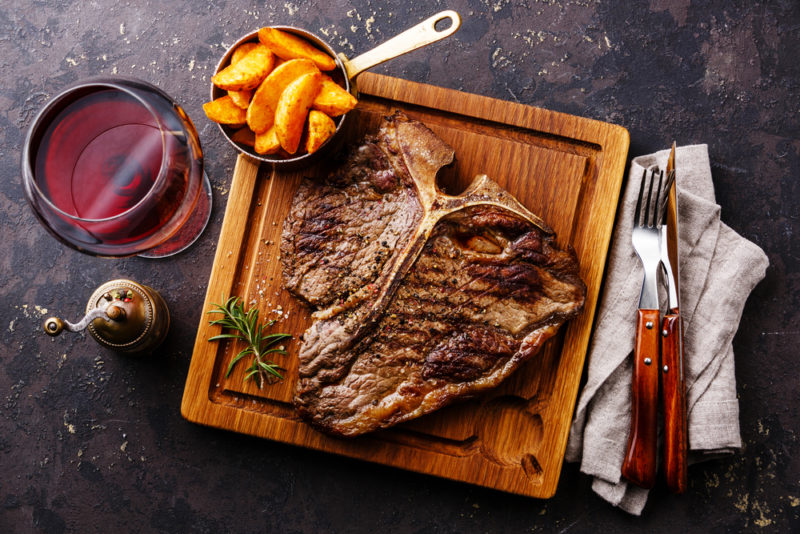
Thankfully, liver isn’t the only cut of beef that provides you with choline. You’ll get some choline regardless of the type of beef that you choose.
However, the amounts tend to be lower. You’ll often end up with around 20% of your daily choline intake from a 3-ounce serving of beef. That’s much less as from the same serving size of beef liver.
Of course, regular cuts of beef are easier to use than beef liver. They’re more common and may be less expensive too. These features are all reasons why you might focus on beef rather than beef liver.
Red meat like beef is controversial. There are concerns that too much red meat leads to health problems, including increased cancer risk. This doesn’t mean that you should cut out red meat entirely. After all, meat is rich in nutrients.
It’s often better to moderate your intake instead. So, be sure to include plenty of plant-based sources of protein in your diet too, along with white meat. Such foods have other advantages anyway, as they’ll often be lower in fact and have a different balance of nutrients.
Chicken

Speaking of white meat, chicken ends up being a good source of choline too. This time, you’re getting around 13% of your choline intake from a 3-ounce serving of chicken breast. This amount of choline might seem low compared to the previous entries, but it’s still decent.
Chicken is also much less controversial than red meat or eggs. Chicken, particularly chicken breast, is seen as a healthy choice. After all, chicken breast is low in fat, packed with nutrients, and is often inexpensive.
It’s a versatile ingredient too and countless recipes rely on chicken breast. You’d only need to do a few online searches to find dozens of new ideas about how to use chicken.
The dark meat in chicken tends to have less choline than the light meat. Still, the difference isn’t dramatic, so you can choose whichever part of the chicken you’re interested in.
Other Types of Meat and Poultry

Choline is common in animal products, so most cuts of meat and poultry will contain a decent amount of the compound. We’ve mentioned beef and chicken already, as these are the two most notable choices.
Pork chops are another good meat to try. You end up with around 30% of your daily choline intake from a pork chop, although the exact amount will vary depending on the size of your chop, the amount of fat, and other factors.
Turkey and duck both rank well for choline content too. These might not be as popular as chicken, but it’s always nice to have other options at hand. In fact, there’s no need to stick to common types of meat. More unusual options contain plenty of choline too, including bison and venison.
There may even be more choline in game meat, due to differences in what animals eat and how they are raised. Regardless, it’s clear that you can focus on whatever meat you enjoy the most.
Milk

Milk too provides choline. This time, you get roughly 15% of your daily intake from a 16-ounce glass of milk.
There is a slight variation in choline content based on the type of milk that you choose, with whole milk having less choline than low fat and skim milk. However, the differences are slight, so the type that you choose isn’t going to matter too much.
There may be other variations too. For example, milk from grass fed cattle could have different choline levels. There may even be farm-to-farm variation.
Still, such differences don’t matter too much. The important point is simply that you get a decent amount of choline in each glass of milk.
Dairy Foods

Because milk offers choline, foods made from milk have some choline as well. However, the amount of choline varies depending on the product that you chose.
With yogurt, you’re generally getting around 7% of your daily choline intake from a 1-cup serving. While the choline content is similar between regular yogurt and Greek yogurt, some yogurts do seem to have less choline than others.
Watch out for products with additives and ones that have been heavily processed. These are generally less healthy. They may offer less choline too.
The choline levels in cheese vary much more dramatically and you don’t get as much choline as with milk or yogurt. For example, cottage cheese tends to offer around 4% of your choline intake in a 4-ounce serving. That’s not much – and cottage cheese is one of the best types of cheese for choline.
Still, cheese is a common ingredient and a fantastic snack, so don’t write it off completely.
Beans

Don’t worry, while choline rich animal foods are common, there are some plant-based options too. Kidney beans, for example, provide around 16% of your daily choline intake in a single cup. Navy beans have a similar amount too, especially if you’re getting the beans from a can.
Other types of beans are lower in choline but are still notable. For example, you get a little over 10% of your daily choline intake from a cup of white beans, lima beans, pinto beans, or black turtle beans.
While there may be some variation between each type of bean and individual cultivars, most beans do provide some choline. Beans are also powerful. After all, they’re inexpensive and can be easily used to bulk out a meal.
Beans also have a different nutrient balance than most other items on this list. Getting more plant-based foods in your diet is important for health and beans are an easy way to do just that.
Edamame
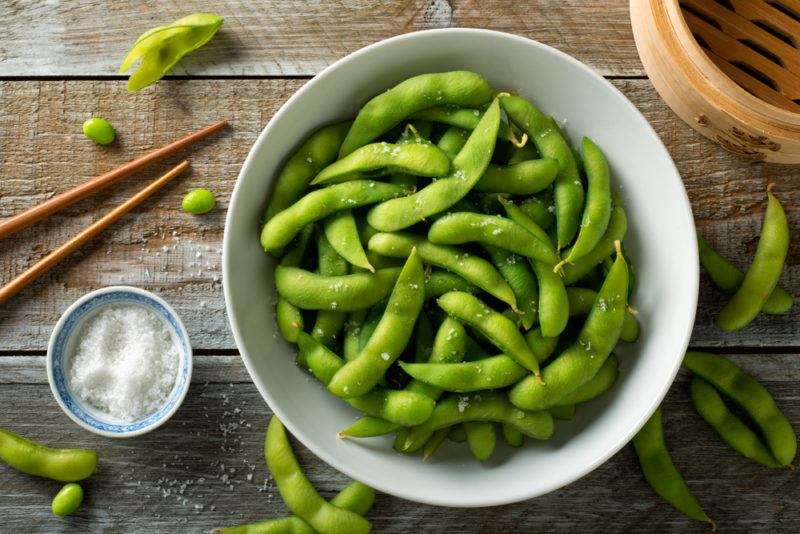
Edamame is worth a special mention. This snack is made from boiled immature soybeans and can be eaten hot or cold. You’ll often see edamame as part of a bento box, although you can eat them on their own too.
The choline level here is similar to kidney beans and navy beans. The difference is that those beans need to be included in a meal, while edamame can be eaten on its own.
Soy Products

Because soybeans contain choline, the products made from soybeans are often a good choice for choline too. Tofu and tempeh are both interesting choices here. Tofu is made from soy milk and is a common meat alternative, while tempeh is a fermented product made from whole soybeans.
There are many other soy products too, including meat alternatives, soy milk, soy flour, and all the foods that use these as ingredients. While the amount of choline will vary dramatically across the different soy products, you’re likely to get at least some choline regardless of the ones that you choose.
Other Legumes

Beans are just one type of legume and other legumes provide you with choline too. For example, when they’re cooked, chickpeas, lentils, and split peas all contain a little over 10% of your daily choline intake per cup.
These legumes have similar advantages to beans. Some are even easier to use. After all, you generally need to soak beans before you use them while doing so isn’t necessary for lentils.
Chickpeas are even more interesting, as they’re the key ingredient in hummus, which is a delicious and healthy dip that you can easily make at home. Chickpeas can also be roasted and eaten much like nuts.
Mushrooms

Mushrooms often get missed out on lists of choline foods. Despite this, you do get some choline in mushrooms. A half-cup serving of cooked shiitake mushrooms, for example, contains around 5% of your choline intake.
Don’t be fooled by the low percentage. Mushrooms might have less choline than many entries on this list, but their calorie content is lower too. This creates an appealing choline to calorie ratio and makes mushrooms an easy way to add extra choline to your diet.
Shiitake mushrooms aren’t the only ones with choline either. Most other mushrooms provide choline too, including the white button mushrooms that many of us use regularly.
Salmon

The marine world is another powerful choice for choline. Let’s start with salmon, as this fatty fish remains incredibly popular for its flavor and potential health benefits. After all, salmon is a good source of omega 3 fatty acids and protein, along with a host of important nutrients.
The choline content of salmon is notable too. You may get more than a third of your choline intake from a single fillet.
However, there is variation here. The choline content varies based on where the salmon is caught and whether it was wild-caught or farmed. There may be variation from one catch to the next too, even for the same type of salmon.
While choline levels are hard to predict, wild-caught salmon is normally seen as the healthier choice. Just be sure to find a company that focuses on sustainable harvesting.
Cod

Cod is a white fish with delicate flesh. The flavor is much subtler than salmon, which some people find appealing.
While salmon is a fatty fish, cod is considered lean instead. You end up with less fat per serving, which makes cod lower in calories too. As such, white fish like cod are an easy choice for anyone watching their calorie intake.
The lower fat content means that cod offers less omega 3 fatty acids than salmon. But, the concentration of some other nutrients is higher – like iodine. This is why it’s best to include multiple types of fish in your diet. By doing so, you get access to a wider range of nutrients.
Other Types of Fish

While salmon and cod are the best types of fish for choline, other types of fish provide the nutrient too. Tuna, whitefish, haddock, herring, sole, and tilapia are all good choices. You’ll often get more than 15% of your daily choline intake from a fillet, which isn’t too bad.
Fresh fish isn’t your only option either. You could turn to canned fish, smoked fish, or even products like fish sticks. Just be sure to focus on foods that aren’t heavily processed.
Despite the benefits of fish, you should also pay attention to the amount that you eat. Fish tends to accumulate mercury, which can be a problem in high doses. Be particularly wary of fish that are high in mercury, including king mackerel, tuna, shark, and orange roughy.
Shellfish

Not surprisingly, you’ll find choline in shellfish too. Shrimp are one of the best choices here, providing around 20% of your required choline in a single 3-ounce serving. This is fantastic, as shrimp are popular for their taste and texture anyway.
Other interesting options include scallops, clams, and blue crab. But, in the end, any type of fish or shellfish is going to contain some choline.
The best approach will be to include a variety of types in your diet. Each type contains a different balance of nutrients, so the benefits vary from one to the next.
Cauliflower

Vegetables aren’t great sources of choline and cauliflower ends up being one of the best. It provides you with around 8% of your daily choline intake per cup.
Cauliflower has a few key advantages too. One is versatility. Have you seen how many ways people use cauliflower these days? It’s incredible.
The first step is often to create cauliflower rice (which is just finely diced raw cauliflower). That rice can be used in countless ways. I’ve seen recipes for cauliflower pizza crusts, cauliflower bread, cauliflower macaroni cheese, and countless other examples.
Recipes like this are often designed to be low carb alternatives to regular meals. They can also be easy ways to make your meals healthier and to increase your choline intake.
Brussels Sprouts

While many people don’t like the flavor of Brussels sprouts, there’s little doubt that the round vegetables are very good for you. They’re even one of the best vegetables for choline, with a cup of cooked Brussels sprouts providing you with roughly 12% of your daily choline intake.
Brussels sprouts aren’t the only vegetable for choline, so there’s no need to stress too much if you’re not fond of them. Still, it’s worth finding a good recipe and trying Brussels sprouts out for yourself – especially if you have bad memories of the vegetable.
Most people’s bad experiences come from badly cooked Brussels sprouts. When the vegetable is cooked well instead, the result can be quite different.
Broccoli

If you want an easier choice than Brussels sprouts, try turning to broccoli instead. The amount of choline here is only slightly less than with Brussels sprouts and many of us do find broccoli easier to eat.
Besides, there are plenty of delicious recipes that use broccoli. You could even cook the cruciferous green on its own and serve it as a side dish.
Swiss Chard

Leafy greens are well-known for their nutrient content. They have a lot to offer and are low in calories too. While the greens have many things in common, each type does have distinct advantages. In the case of Swiss chard, choline is one of those advantages.
You end up with a little under 10% of your daily choline intake from a cup of cooked Swiss chard. Getting this much Swiss chard in your diet is surprisingly easy, especially if you’re using it as part of a smoothie or in a recipe.
Artichokes

Artichokes don’t look exciting. Their dull color makes it seem like they should be pretty bland, but this isn’t the case at all. Instead, they have a distinctive flavor and an interesting nutrient profile.
Plus, artichokes are good sources of polyphenols and prebiotics. Most polyphenol rich foods are brightly colored. It’s unusual to see a white food that’s rich in polyphenols, but there you go, artichokes are interesting in that way.
We’re including artichokes on this list, which means that they’re a source of choline too. The amount of choline is roughly the same as with Swiss chard, which isn’t amazing but isn’t too shabby either. With so many choline foods to choose from, it’s easy to see how your choline intake would add up over time.
Asparagus

While other vegetables offer some choline too, asparagus is the last one that we’re going to highlight. You end up with around 9% of your daily choline from a cup of cooked asparagus. You can even turn to canned asparagus if you’re looking for something convenient.
Asparagus is also a powerful source of folate, making it an important choice for pregnant women. There are plenty of antioxidants present too, along with fiber and other nutrients.
Quinoa

Quinoa is often called a pseudocereal. This means that it isn’t technically a cereal crop or a grain, but we use quinoa as if it were. Quinoa is cooked in boiling water, much like rice or pasta, and then can be used in similar dishes. In fact, you can often simply replace rice with quinoa. Such a switch is appealing, as quinoa contains more nutrients than rice. It has a more interesting flavor profile too.
Quinoa doesn’t make it onto most choline food lists, which is surprising, as a cup of uncooked quinoa provides a similar amount of choline as a large egg. That’s impressive when you consider how easy quinoa is to use.
Avocados

Choline isn’t common in fruit at all. Avocado is your best bet, but you still only get around 5% of your daily choline intake from a whole avocado. That’s not all that good, as many people will only be eating half of an avocado in a serving anyway.
Still, every little bit counts and avocados are popular.







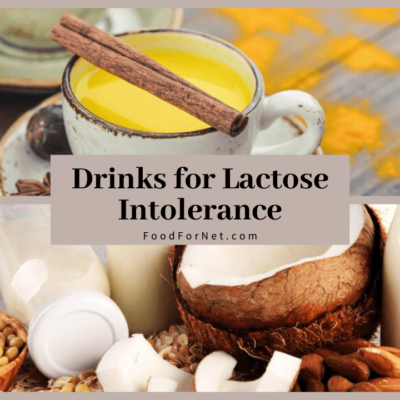






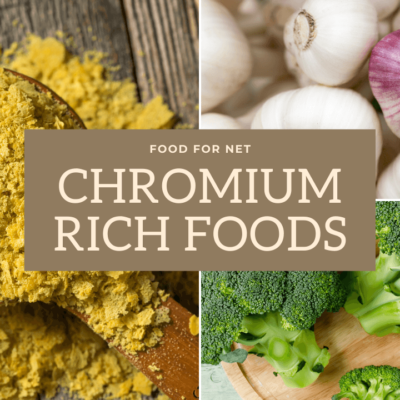
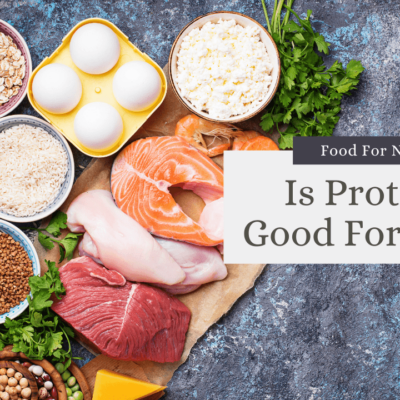

 Best Wine Pairing With Lobster
Best Wine Pairing With Lobster
Leave a Reply